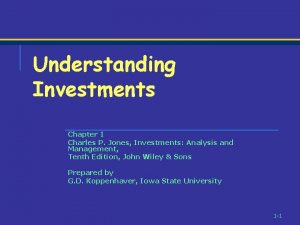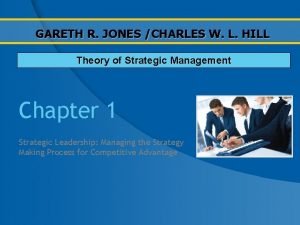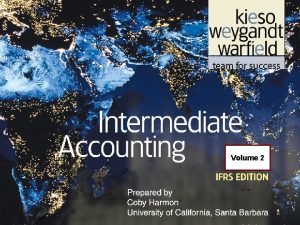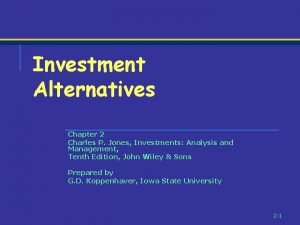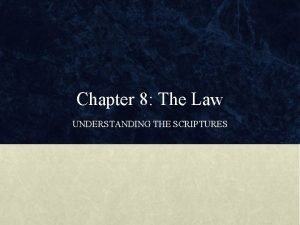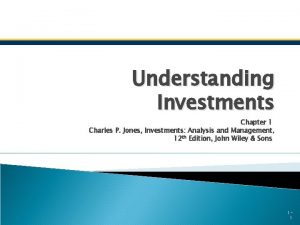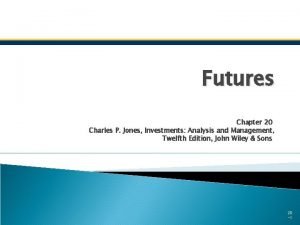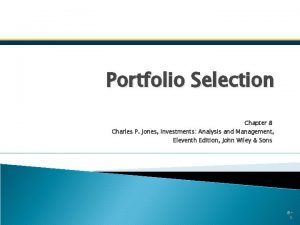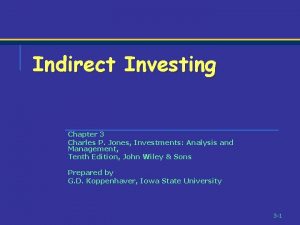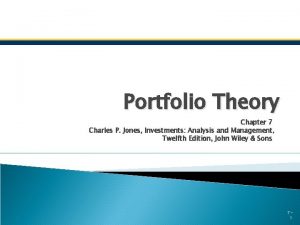Understanding Investments Chapter 1 Charles P Jones Investments








- Slides: 8

Understanding Investments Chapter 1 Charles P. Jones, Investments: Analysis and Management, Tenth Edition, John Wiley & Sons Prepared by G. D. Koppenhaver, Iowa State University 1 -1

Objectives n n n To understand the investments field as currently practiced To help you make investment decisions that will enhance your economic welfare To create realistic expectations about the outcome of investment decisions 2

Investments Defined n Investments is the study of the process of committing funds to one or more assets Ø Ø Ø Emphasis on holding financial assets and marketable securities Concepts also apply to real assets Foreign financial assets should not be ignored 3

Why Study Investments? n Most individuals make investment decisions sometime Ø n Need sound framework for managing and increasing wealth Essential part of a career in the field Ø Security analyst, portfolio manager, registered representative, Certified Financial Planner, Chartered Financial Analyst 4

Investment Decisions n Underlying investment decisions: the tradeoff between expected return and risk Ø n Expected return is not usually the same as realized return Risk: the possibility that the realized return will be different than the expected return Ø Investor risk tolerance affects expected return 5

The Tradeoff Between Expected Return and Risk n n Investors manage risk at a cost lower expected returns (ER) Any level of expected return and risk can be attained Stocks ER Bonds Risk-free Rate Risk 6

The Investment Decision Process n Two-step process: Ø Security analysis and valuation n Ø Necessary to understand security characteristics Portfolio management n n Selected securities viewed as a single unit How efficient are financial markets in processing new information? How and when should it be revised? How should portfolio performance be measured? 7

Factors Affecting the Process n Uncertainty in ex post returns dominates decision process Ø n n Future unknown and must be estimated Foreign financial assets: opportunity to enhance return or reduce risk Quick adjustments needed to a changing environment The Internet and investment opportunities Institutional investors important 8
 Understanding investments
Understanding investments Charles w. l. hill y gareth jones
Charles w. l. hill y gareth jones Charles luther manson
Charles luther manson Intermediate accounting chapter 17 investments pdf
Intermediate accounting chapter 17 investments pdf Under ifrs the presumption is that equity investments are
Under ifrs the presumption is that equity investments are Chapter 2 investments
Chapter 2 investments Chapter 11 real estate and other investments
Chapter 11 real estate and other investments Chapter 9 lesson 3 understanding violence
Chapter 9 lesson 3 understanding violence Understanding the scriptures chapter 24 study questions
Understanding the scriptures chapter 24 study questions
